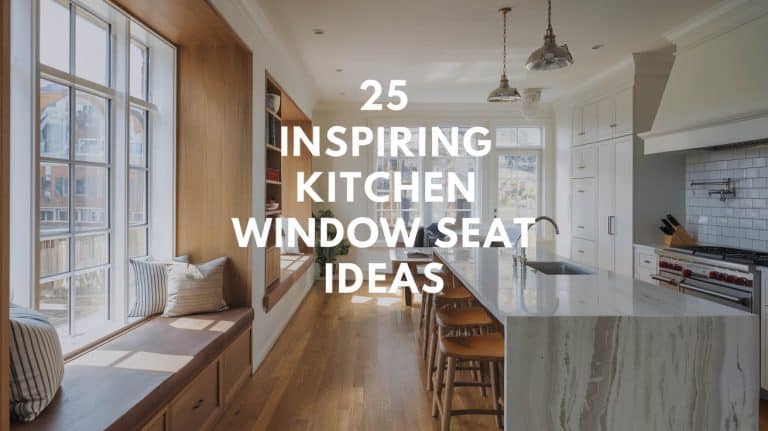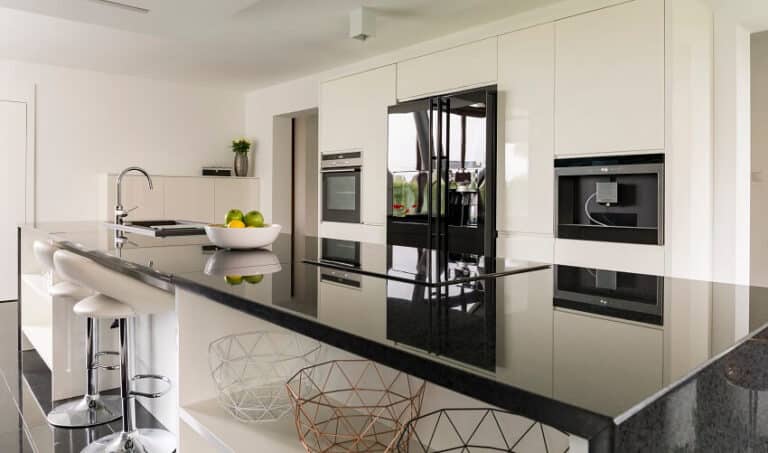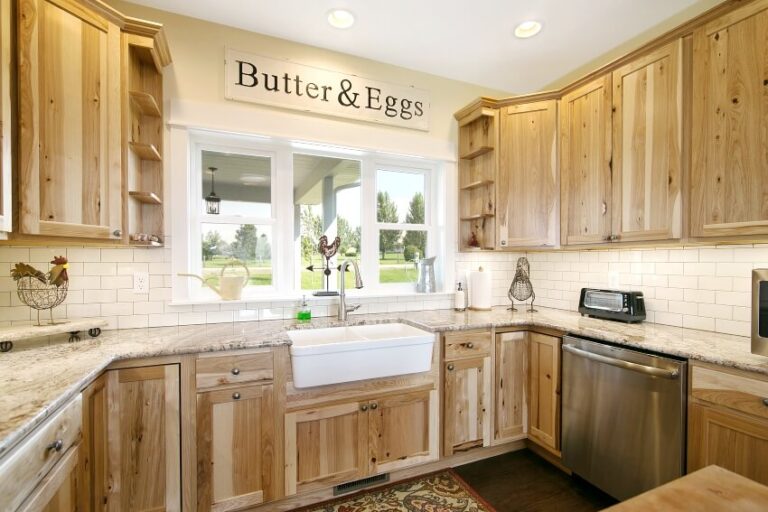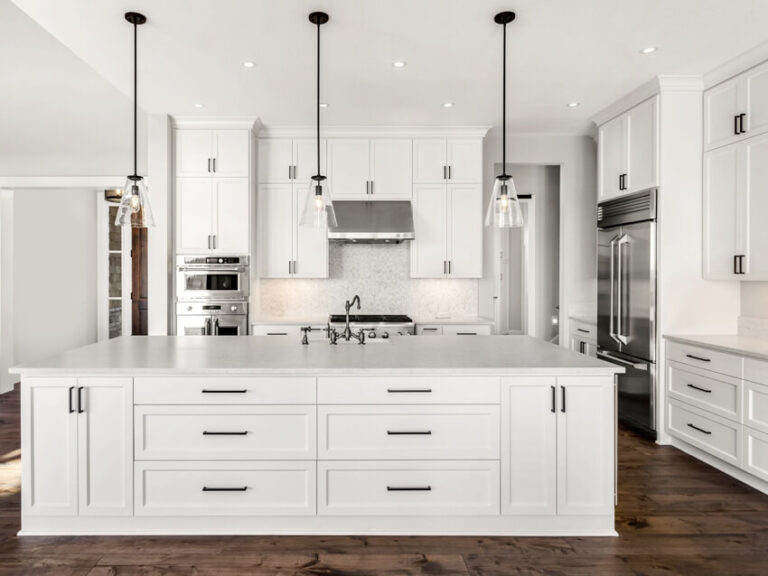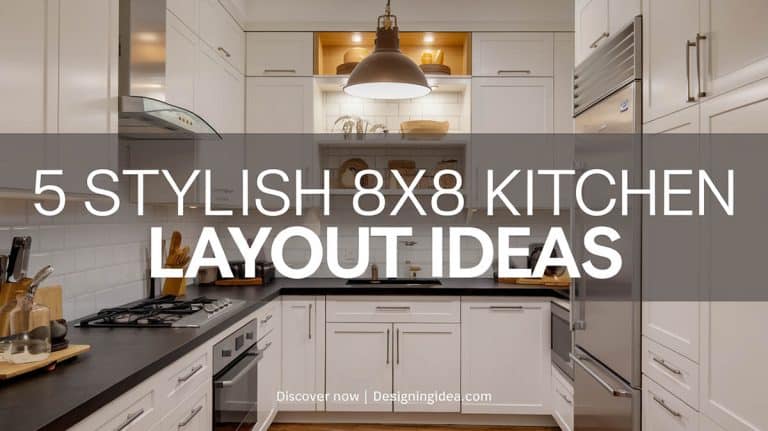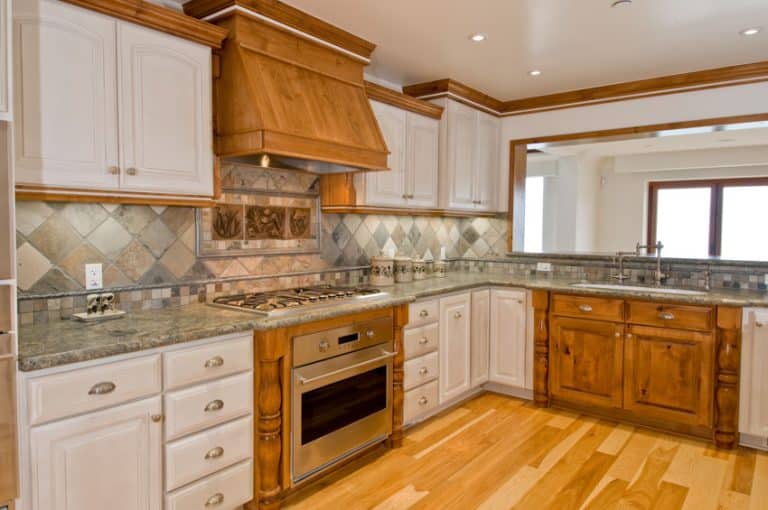Euro Style Kitchen Cabinets (Styles & Materials)
These Euro-style cabinets showcase the types of cabinet construction, doors, hinges, hardware, costs, RTA Euro-style cabinets, and comparison to face frame cabinets.
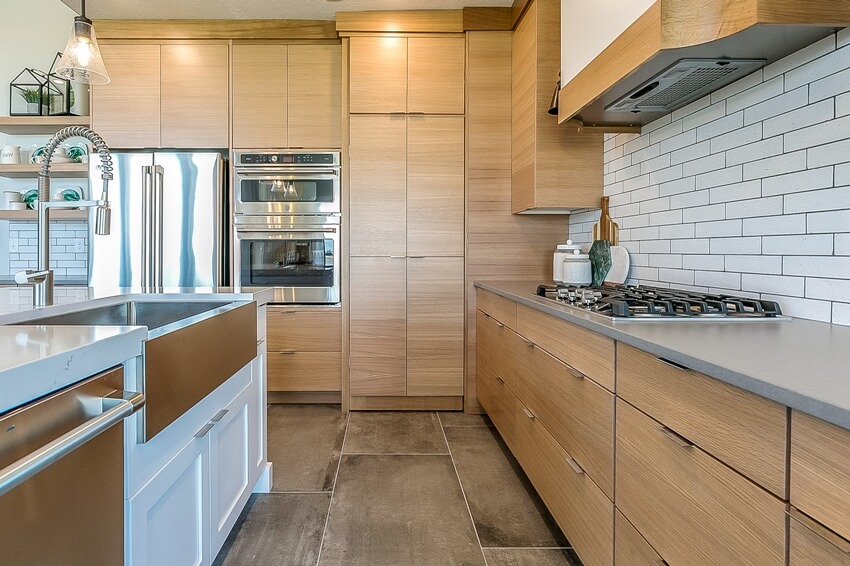
In addition, the European cabinet style is considered one of the most durable types of furniture due to its high-quality materials and build quality. If you’re looking for an efficient cooking space, this modern cabinet’s space-saving and ergonomic features will make it a worthy investment for your next build or renovation.
The ultra-modern style has been in the European market for some time now, and you’ve probably seen them in showrooms, high-end homes, and décor magazines. However, thanks to the increasing number of local suppliers in the U.S., you’ll find euro-style cabinets more readily available. This all means less lead time and more affordable prices.
What Are Euro Style Kitchen Cabinets?
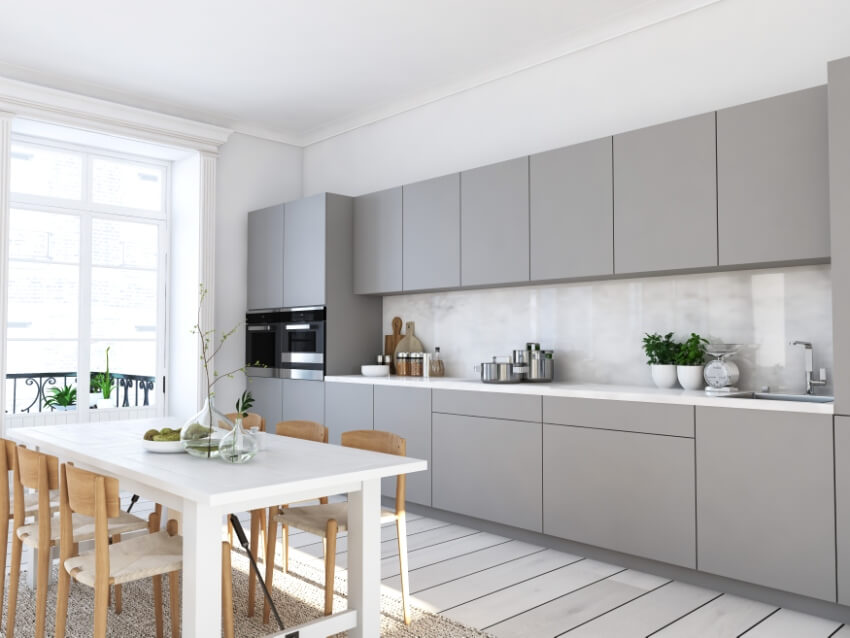
There are no moldings, ornate trims, carvings, or raised panels in Euro-style cabinetry, and also many use concealed hinges to emphasize the flat and smooth surfaces. As a result, even a modest design can appear more spacious thanks to flat, seamless, streamlined designs, which are frequently finished in wood or high-gloss.
Aside from the frameless design, you’ll notice the use of concealed cabinet hinges with options for wide opening angles, which can extend up to 170 degrees or more. This functionality is possible due to the frameless construction, which allows you to access a wider interior.
European cabinetry is also known for its highly reflective finish and excellent quality of materials. However, newer models of the Euro-style cabinet has already produced matte finishes and textured finishes while maintaining that sleek build.
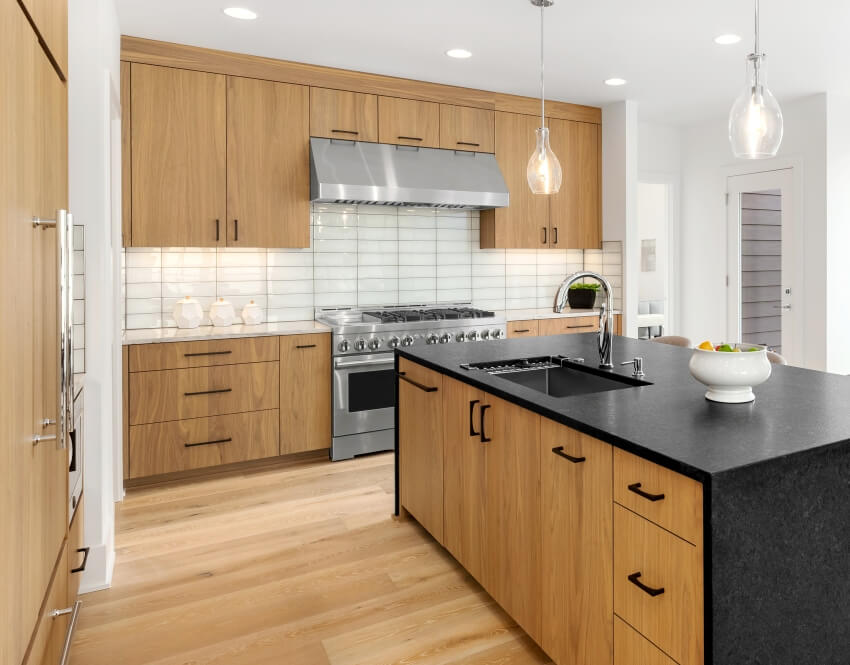
Natural finishes are also simulated now with the use of melamine materials. They come in a wide range of colors, with high gloss white and charcoal being the most popular.
The forward-thinking system of European styling also made it possible to take advantage of the integration of automated technologies and space-saving solutions.
The Eurostyle cabinet style was first introduced in the market in the early 20th century, where the built-in systems and the efficient workflow have come to be appreciated.
European Style Cabinet Construction
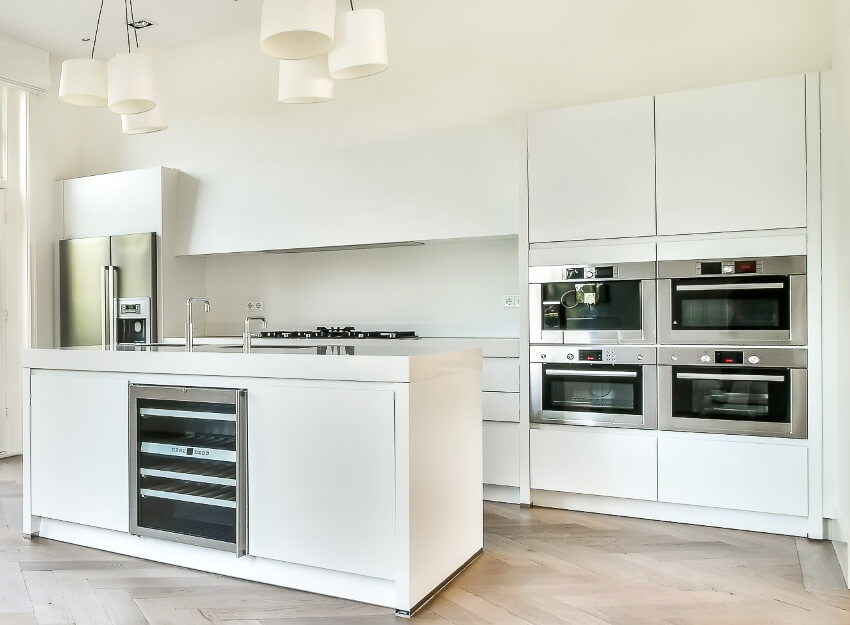
The Euro-style cabinet is known to be a game-changer in the cabinet industry due to its fast and simple system. The ease in setting up the row of drill holes for machines is one advantage of the 32 mm, and you’ll also find the system used for RTA (ready to assemble) cabinet pieces in general. The 32mm system uses European cabinet hardware.
The cabinet construction of Euro-style cabinet units is characterized by sleek solid slab doors with 1mm or zero-edge banding used on the edges to give that seamless look. Due to its frameless construction, it gives a wider, unobstructed interior for storage.
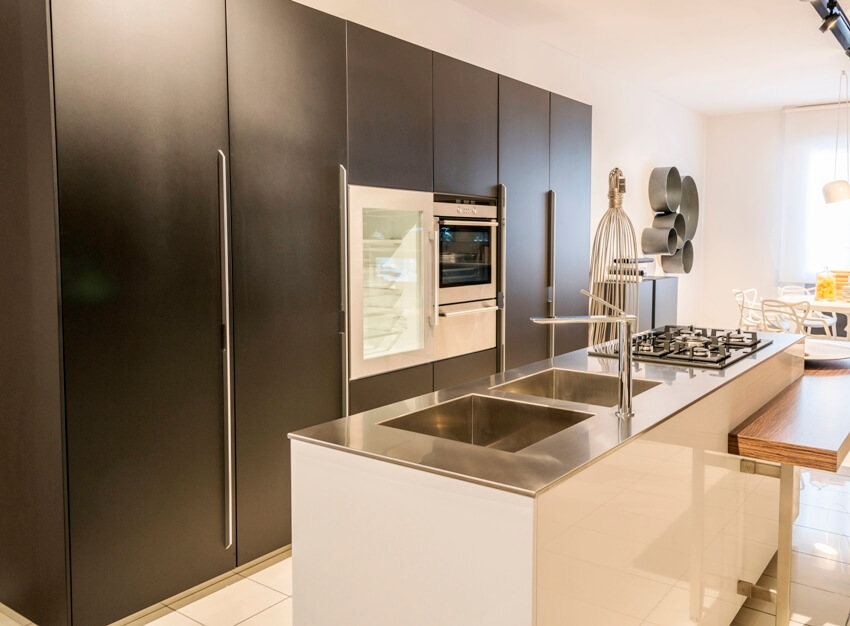
The construction system of Euro-style cabinetry allows you to have:
• Seamless cabinet frontage and sides make it a versatile piece of furniture for any style or theme.
• Wider interior unobstructed width allows you to maximize storage space. You won’t have a center stile in the middle where two cabinet doors meet.
• Wider opening angles such as 110 degrees, 120 degrees, and 170 degrees.
• Integrated appliances such as integrated cutting boards, concealed pantries, and cooktops.
• Integration of ergonomic space-saving solutions for awkward spaces such as corners and other hard-to-reach areas.
• Larger space for drawers as there is no face frame in front.
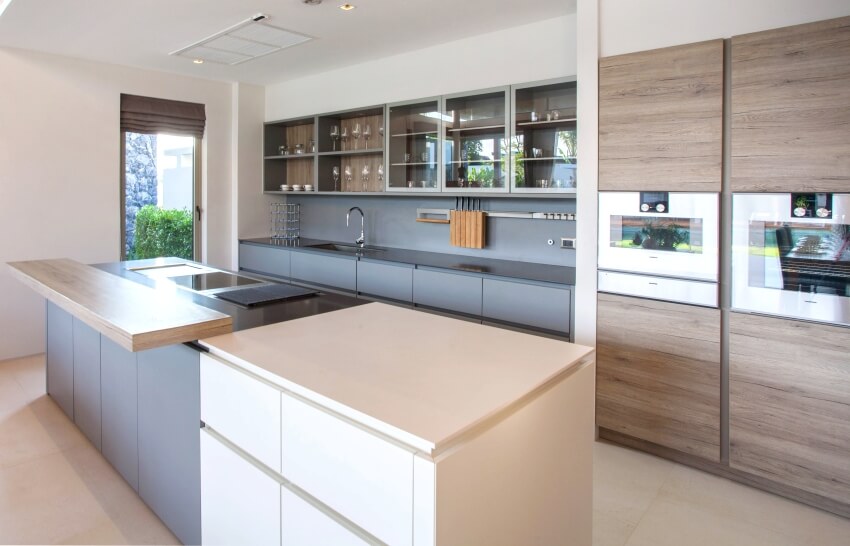
Low maintenance and high moisture resistance make it a practical and time-enduring cabinet surface for rooms constantly exposed to moisture and water, such as the cooking area.
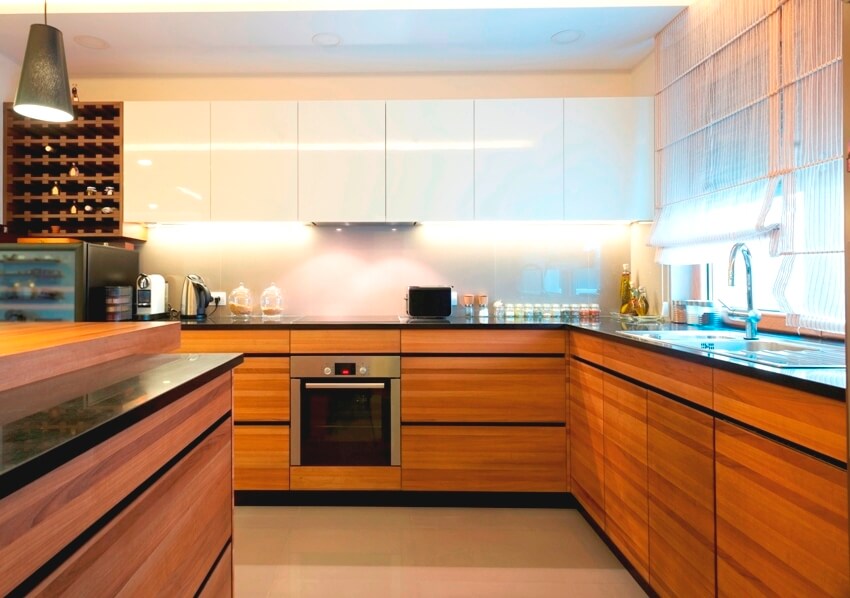
Similar to your thermofoil, it is extremely durable, dent-free, and waterproof, which makes it a tough surface suitable for busy areas.
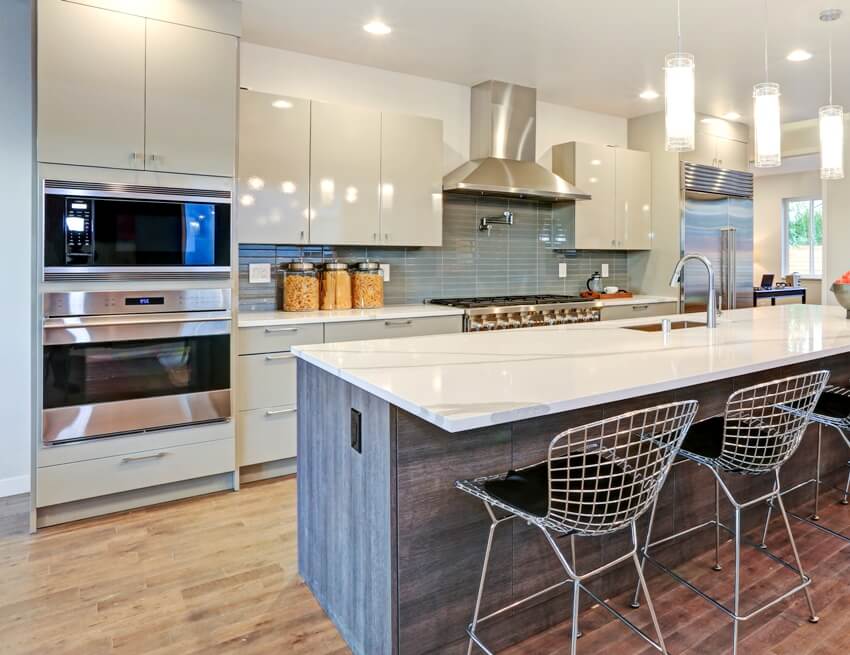
European Cabinet Doors
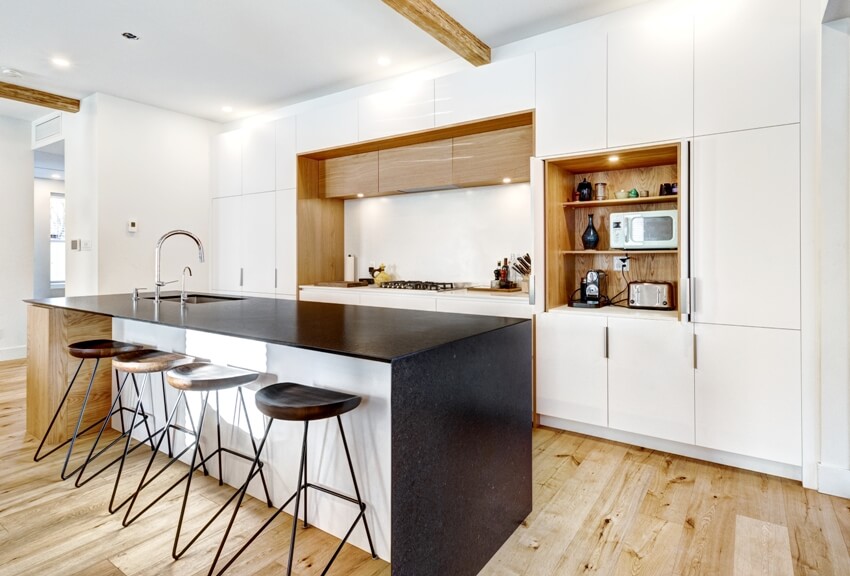
The full overlay door is used for your frameless cabinet, where hinges are installed and flushed to the sides of the carcass or cabinet box. This simple slab-style door and drawer also have a 1mm zero edge banding on all of its edges, creating that seamless appearance.
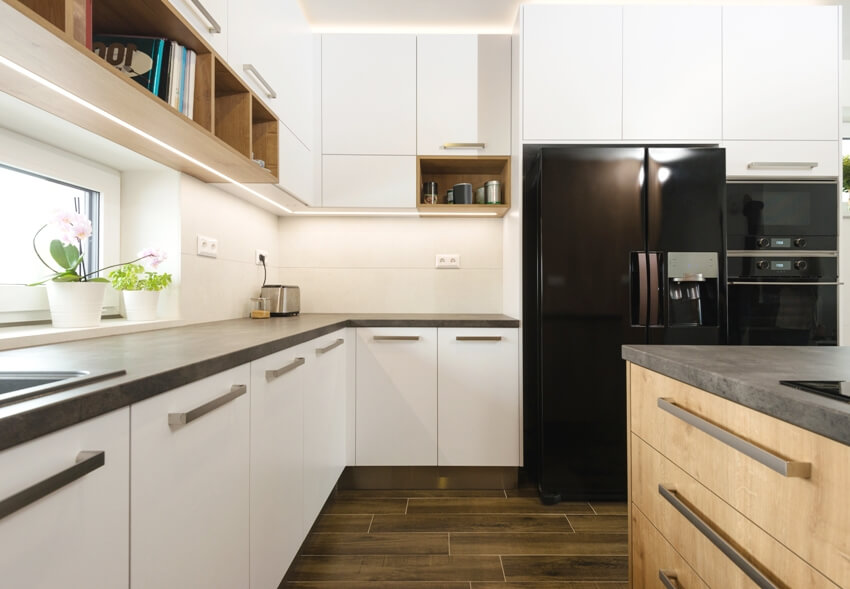
Overlay doors extend past the cabinet opening by a specified dimension. Because of the frameless construction, there is also no need for a center stile in the middle of two cabinet doors.
Most Euro-style cabinet doors do not use solid wood as the construction of your frameless cabinet presents a greater susceptibility to bending or warping. So, you’ll find most Euro-style cupboards made out of composite wood instead, such as MDF cabinets. This material provides the surface finish to recreate finishes or simulate the natural texture of wood.
Euro Type Hinges for Cabinets
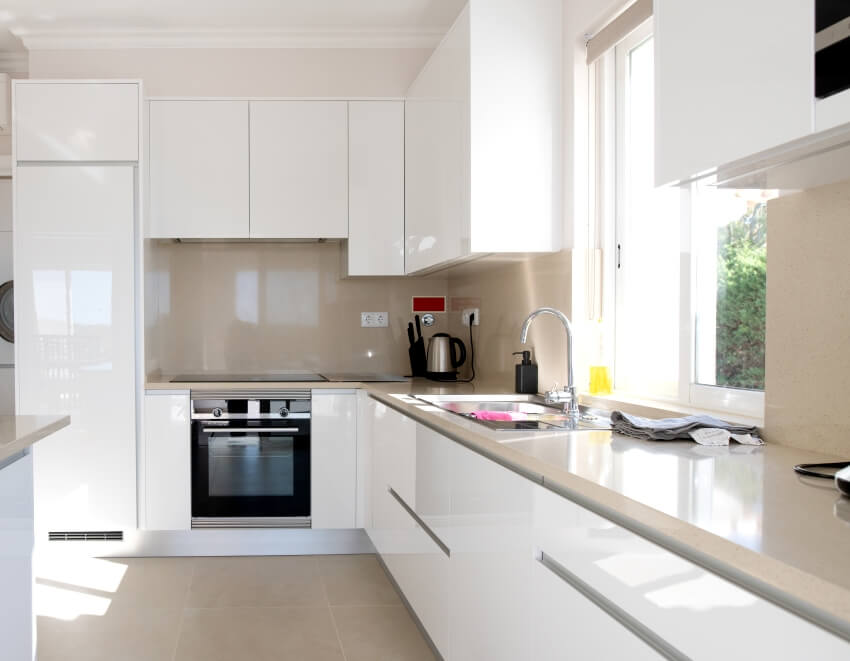
Common hole sizes include 32mm and 35mm inches in diameter. Depending on how you plan to use your cabinet, you’ll also find 25 or 40-mm diameter holes occasionally.
Basic types of Hinges used for Euro Style Cabinets:
Compact Hinges. These hinges are used if you want to utilize the interior space of your cabinet and are usually more affordable compared to your long arm.
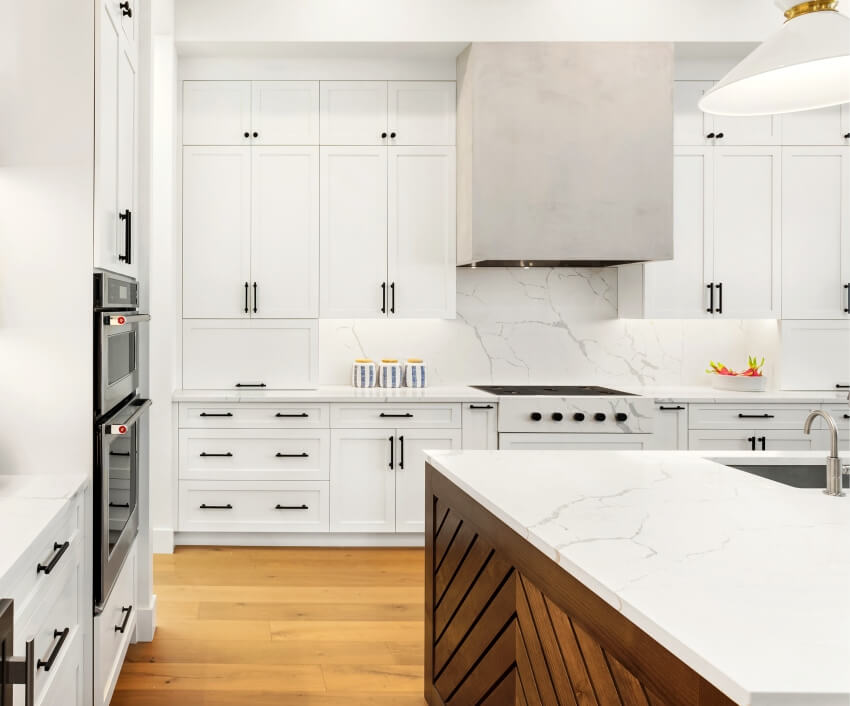
One distinction between long-arm hinges and compact hinges is that they hold the door closer, creating a flushed construction. There are three types of adjustments for the clip-on hinge, namely side-to-side, in and out, and up and down, which are available for inset and overlay doors.
Most Euro-style hinges use the self-closing system, and there are two main types of self-closing hinges, namely:
• Snap-close hinges. The doors close abruptly with final inches.
• Soft-close hinges. As the name implies, the cabinet door will close gently with the final few inches but with a special mechanism to dampen the travel.
The free-swinging hinges of European cupboards are mainly used for small and narrow doors as they can slam faster due to their lightweight. When purchasing Euro-style storage units for kitchens, you’ll notice that the free-swinging hinge and the self-closing hinge are quite identical.
Most Eurostyle hinges have 110 degrees or 120 degrees opening angles, but it is best to choose the best hinge according to these situations.
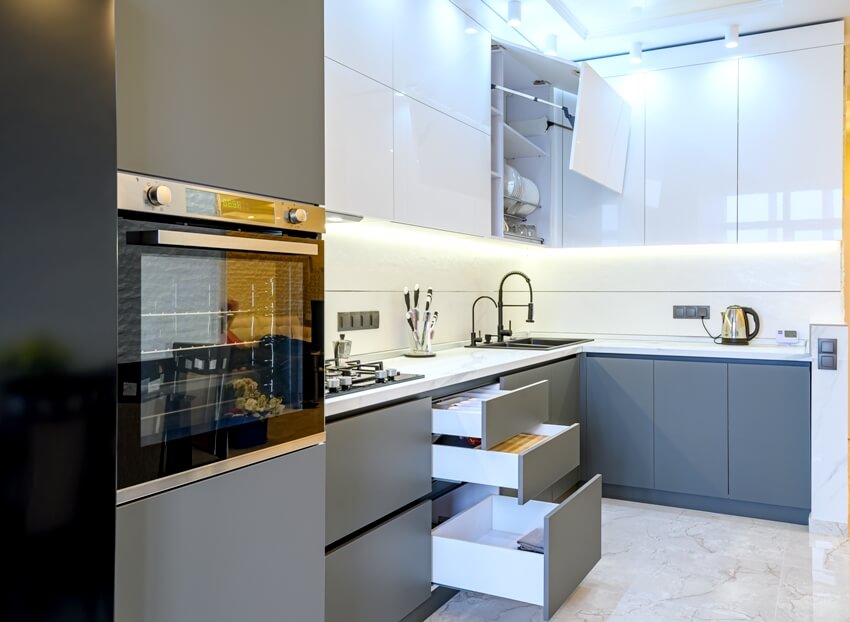
Corner 165-degree hinges. It is best for corners that have an integrated lazy Susan storage system.
With the cabinet door slab construction, hinges accommodate the overlay, inset, and back-to-back construction.
It is important to take note that European hinges can also be used for other types of storage units, such as face frame design. See more types of kitchen cabinet hinges here.
Cabinet Hardware for Frameless Cabinets
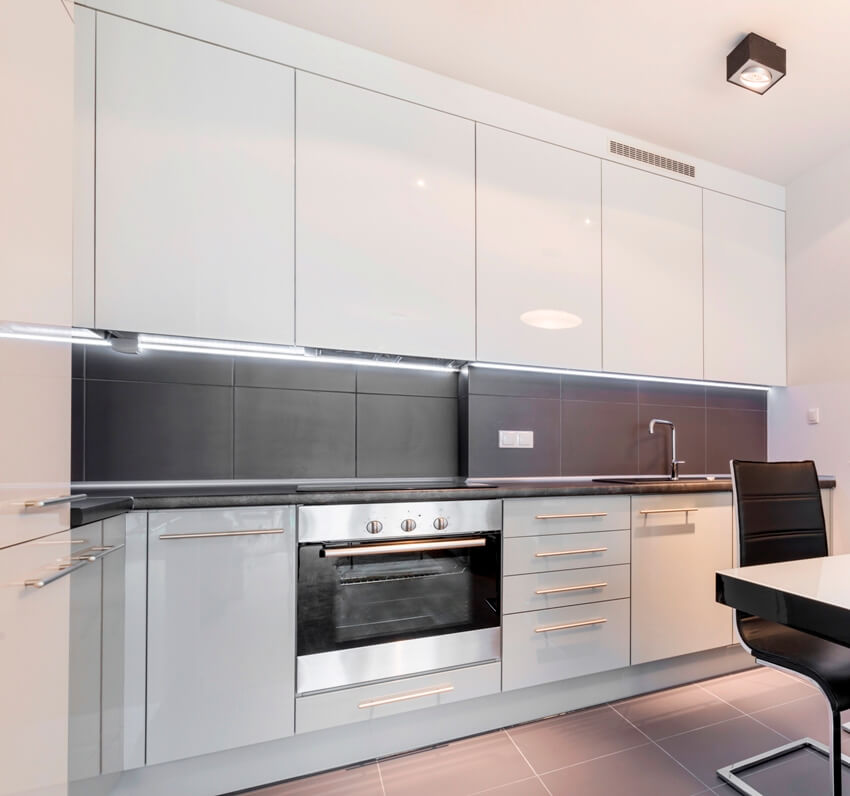
The most popular European bar pulls can come with rectangular bar or ring profiles made from a wide range of colors and metals. Brushed nickel pull bars are the most common, but we’re also seeing black matte pull bars.
How Much Do European Kitchen Cabinets Cost?
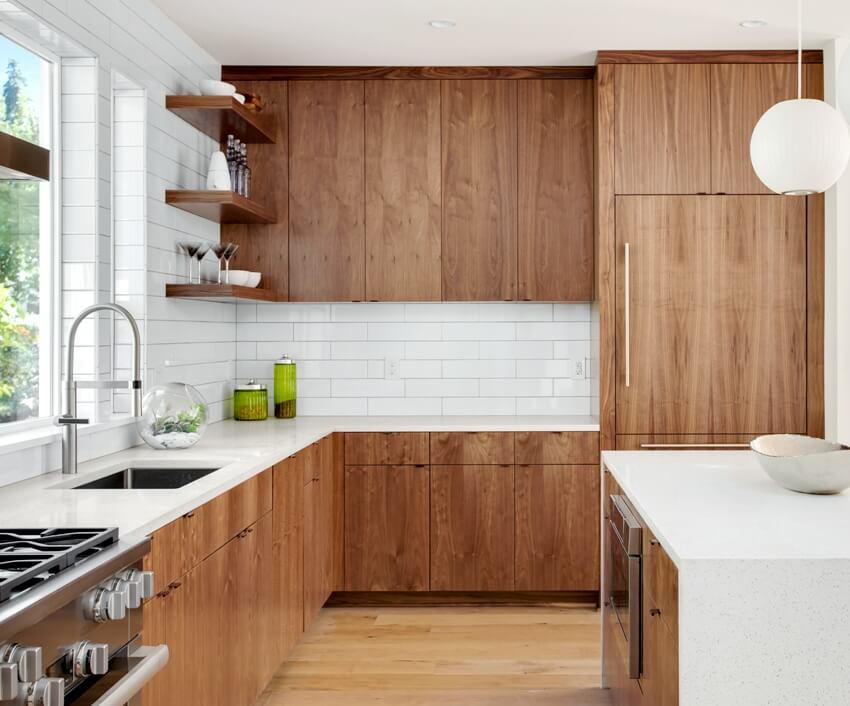
According to the latest cabinetry design estimates, the prices range from middle to higher-end pricing. The price increases for custom designs will also depend on the quality of materials.
Today’s European kitchen cabinet industry is competitive, which means the prices for the frameless cabinet are becoming more affordable for the average homeowner. In addition, you’ll find more local suppliers of the euro-style designs, giving way to faster delivery of these storage units to owners.
Euro Frameless Style RTA Cabinets
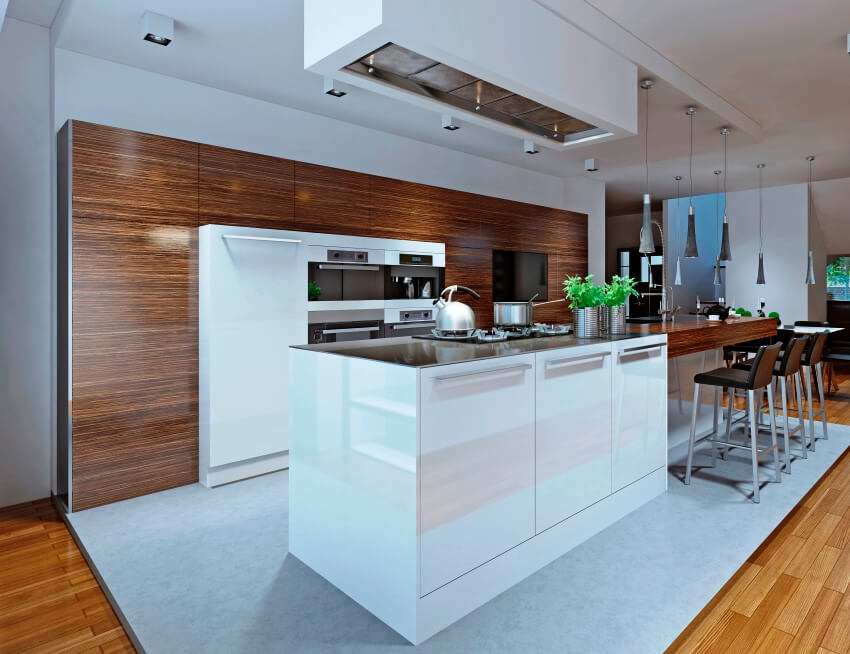
Also known as the flat-panel cabinet, this material is excellent for an experienced DIYer. Those with integrated appliances may need a professional installer, and most suppliers have an in-house installer to help you with your RTA cabinet installation.
Unlike your typical RTAs, the European RTA material is made from quality materials. Most of the ready-to-assemble storage units are 80% pre-assembled, which means cams and dowels are ready in place when delivered.
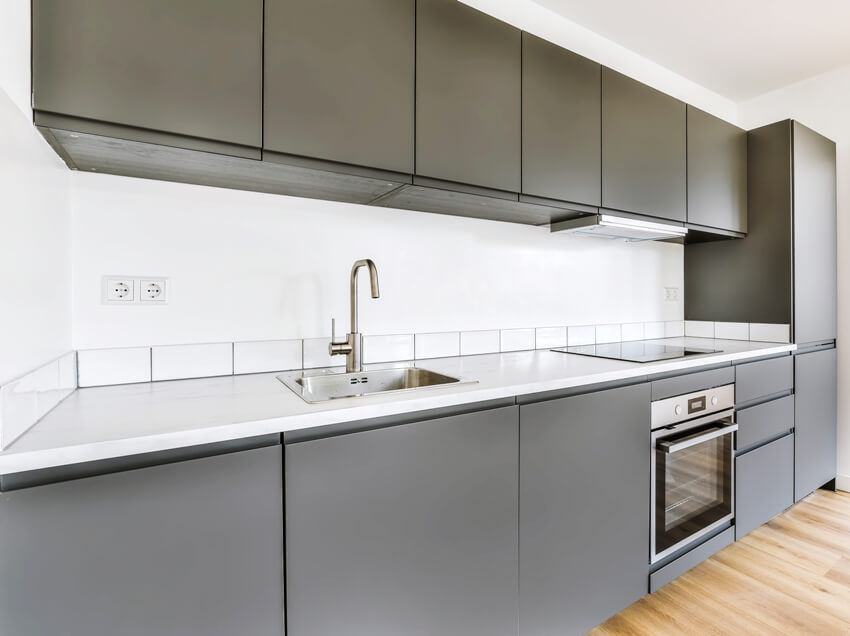
Due to the increasing number of local suppliers, ready-to-assemble units have cut the lead time and increased availability in America.
To be sure with your purchase, most suppliers of RTA for Euro-style cupboards can order samples for an in-home comparison.
Euro Slab Door Cabinets Vs. Face Frame
The major difference between the Euro style and the face frame cupboards is the installation of the mounting plate. The Euro-style is mounted on the side wall or the side panel of the cabinet, while the face frame type is mounted on the edge of the face frame itself.
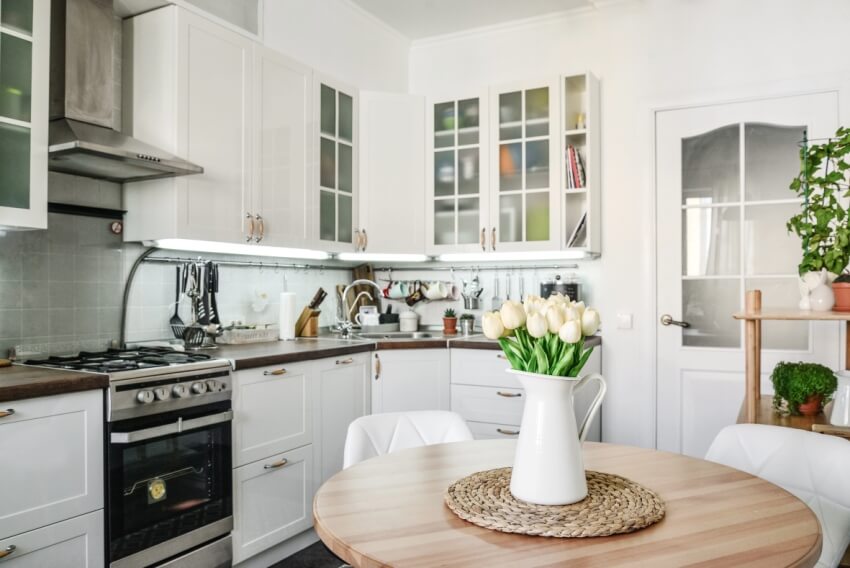
The major advantage of face-framed units is that construction is more stable and stronger, especially for solid wood construction.
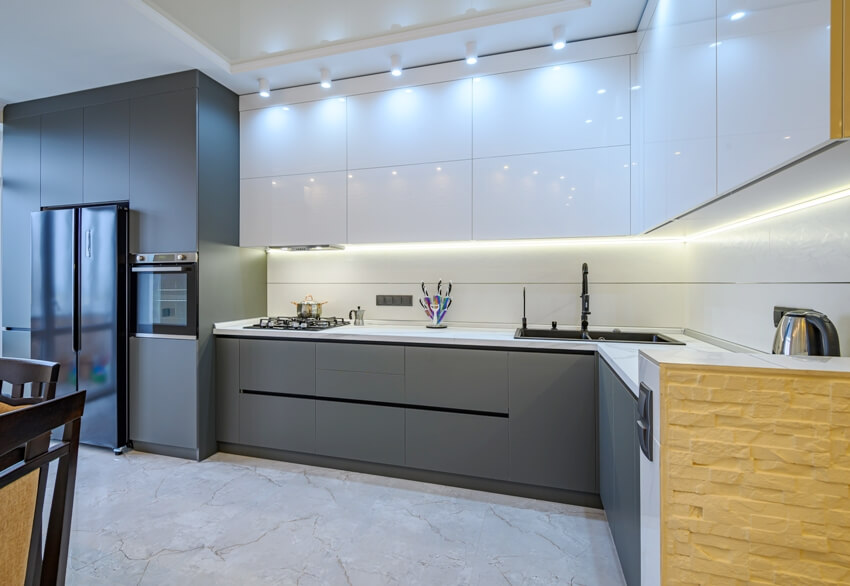
The benefit of having a frameless cabinet is that you get full access to your cabinet interiors due to the absence of center stiles and additional framing on the edges.
Another advantage of frameless cupboards is that they are easier to maintain due to the sleek surface and the absence of joints or corners on the exterior, which means less accumulation of dirt.
Visit this page to see our gallery of kitchen cabinet styles for even more ideas for your space.

